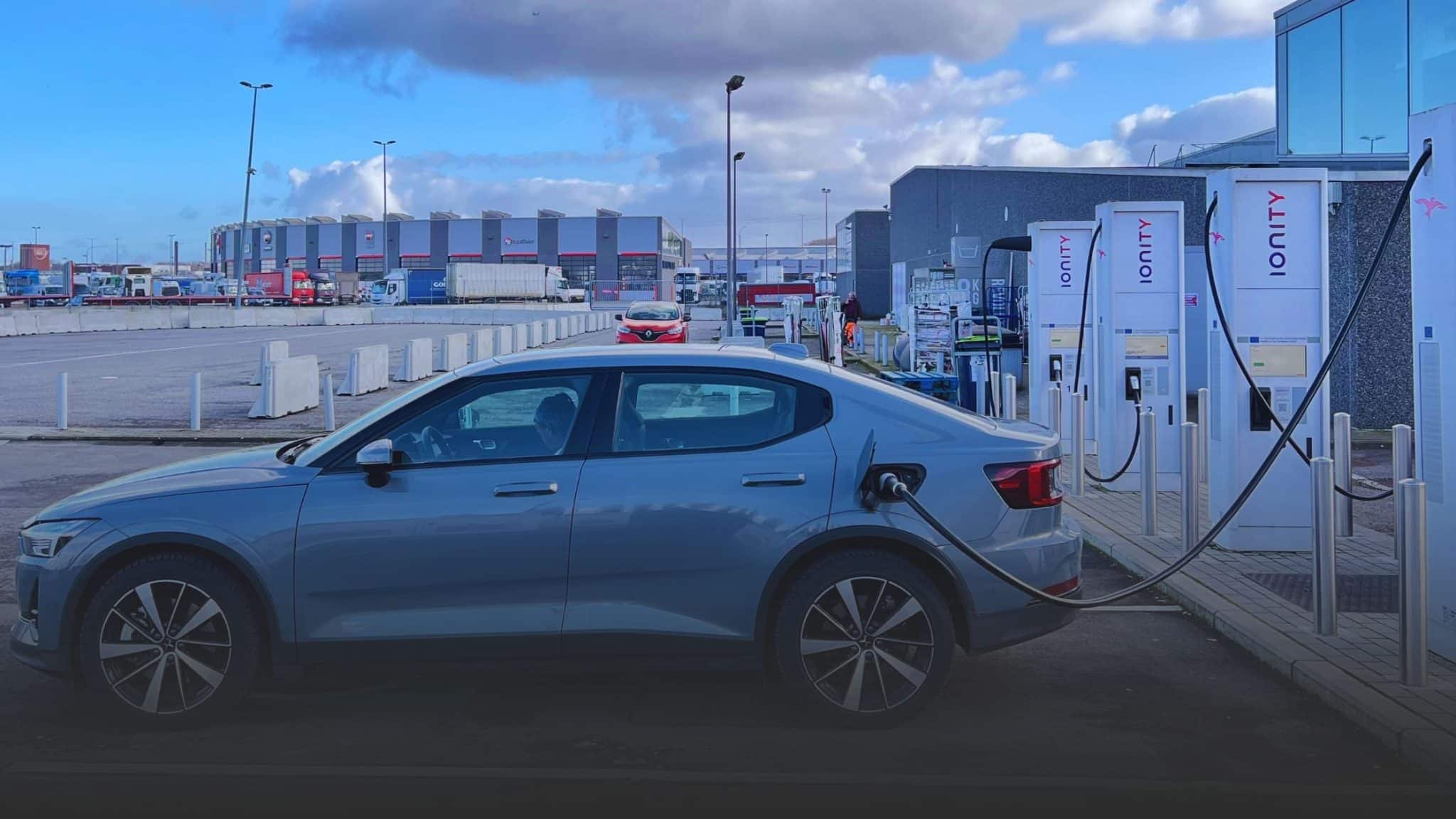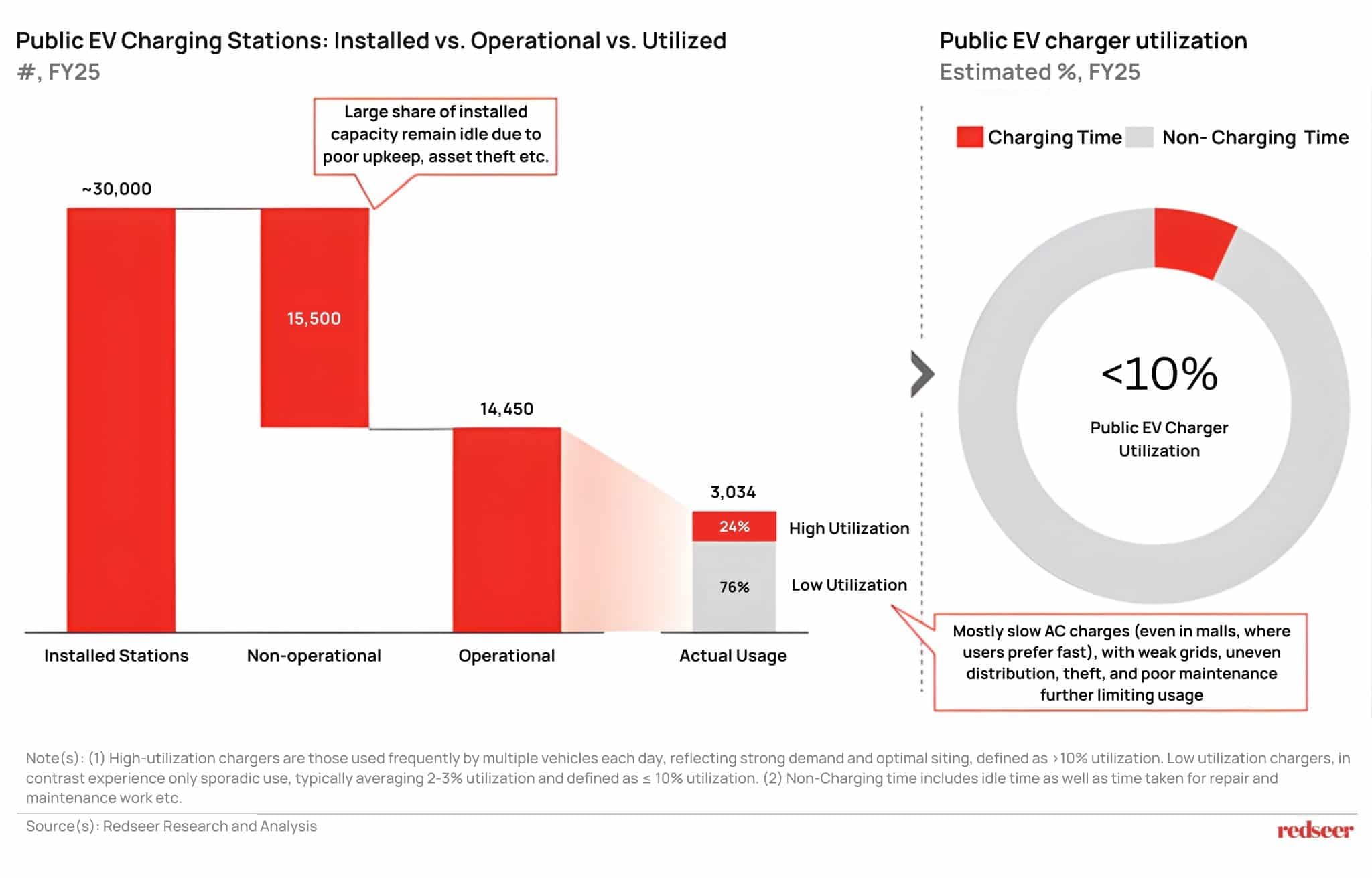
Going the Extra Mile – Challenges and Opportunities in India’s EV Charging Infrastructure
Summary: India has over 30,000 public EV charging stations, but only about a tenth of those are used feasibly. For a truly sustainable green transition, EV charging station operators must balance policy tailwinds with interoperability concerns and on-ground user behaviours.
Picture this: you’ve charged your electric car overnight for a short getaway. You’ve mapped at least four EV charging stations on your route, should the car need charging. But when you pull over at a station, you find that the charging gun is out of order. Driving another 10 km to a highway mall charger, you find that the area is hit by loadshedding. Your only options, then, are to risk being stranded on the highway or wait till this one gets power back.
This experience mirrors that of many EV owners, who continue to experience range anxiety despite the push for electric mobility in India. Thanks to rising fuel costs and a governmental push to reduce dependence on oil exports, EV adoption is on the rise. Sales have surged sixfold in the last 3-4 years, touching 2 million units in 2024. Two-wheelers and three-wheelers dominate, accounting for nearly 90% of sales. The demand is not limited to metros alone; in cities like Jaipur, one in four new cars is electric.
Yet, public EV charging infrastructure, which is the backbone of this transition, remains underutilised and unreliable.
The Paradox of Plenty
India’s EV charging network looks impressive on paper. The country has 30,000+ public stations, a 16x jump since 2022. But only about 15,550 of these are operational. Of those, fewer than 10% see meaningful utilisation.

Build new product innovation and market strategy.
The issue begins with the hardware. A large proportion are slow AC chargers, which work well for overnight home charging, but are inadequate for public use. Add to that unreliable grid supply, theft of charging guns and copper wiring, and poor maintenance, and you get a network that exists, but doesn’t deliver.
The geographic skew is also to blame. Nearly 80% of all charging stations are concentrated within city limits. Charging points on highways – the lifeline for long-distance EV travel – are few and far between. The government’s 2024 guidelines mandate chargers every 20 km on highways, but the deployment is still at its pilot stage.
Consequently, India has a mere five charging stations per 100 km of roads, compared to 100 in China and 180 in Norway, both countries with significantly higher EV penetration. For India to support its ambitious 2030 goal of 30% EV penetration, it needs 1.3 million public EV charging stations. That’s a 44x scale-up from today, and we have less than five years to get there.
The Policy Puzzle
As far as systemic encouragement is concerned, India has a robust policy stack. Most recently, the PM E-DRIVE scheme allocated Rs 10,900 crores, a bulk of which is directed towards subsidising EV adoption and grants for creating capital assets like e-buses, charging stations, and vehicle testing agency upgrades. States like Karnataka, Gujarat, Maharashtra, and Tamil Nadu are subsidising and incentivising EV charging infra setup. The Ministries of Power and Road Transport and Highways stipulate charging stations at set distances, while the 2019 Model Building Bye-laws require about 20% of parking spaces in new residential, commercial, and mixed-use buildings to support EV charging. Government schemes link subsidies to compliance with interoperability protocols.
The implementation of these policies, however, is sporadic. State policies vary wildly in incentives and enforcement. Resident Welfare Associations in cities often deny private charging access, citing safety, wiring cost, and billing complexity. Interoperability protocols are only partially implemented, forcing EV users to juggle multiple proprietary charging stations and accounts.
Reliability, Not Just Rollout
Indian EV charging players need to work towards setting up chargers that are easily accessible and reliable. That means ensuring:
- Grid readiness: Equipment manufacturers, charging point operators, and power distribution companies need to work in tandem to develop grid-compatible fast chargers.
- Anti-theft design: Equipment manufacturers and charging station operators need to ramp up maintenance, develop tamper-proof charging equipment, and implement remote diagnostics for charging stations to mitigate theft, equipment damage, and downtime.
- Smart siting: Monitor real usage data to place chargers where demand actually exists, thus democratising access to chargers across geographies.
- Interoperability by default: Any EV should be able to charge at any station, with a single app for discover-charge-pay.
- Technology innovation: Battery swapping (particularly for e2W and e3W), solar charging, and vehicle-to-grid integration to strengthen grid resilience.
To set up 1.3 million public EV charging stations by 2030, India needs to double its charging station count almost annually. At the same time, the ecosystem also needs to be robust, seamless, and user-centric. The goal is ambitious, but achievable with policy clarity, public-private collaboration, and technological innovation.
Our EV Charging Infra Playbook offers data and actionable insights on how players in this ecosystem can contribute to ramping up EV adoption in India, with data, policies, and actionable insights.
